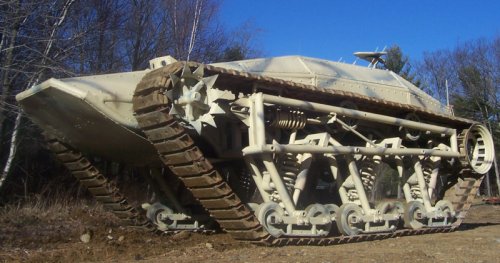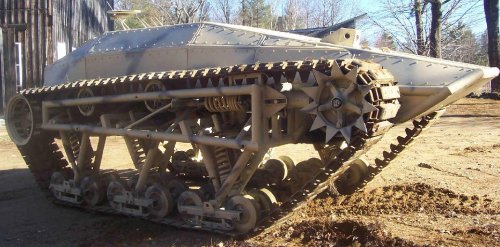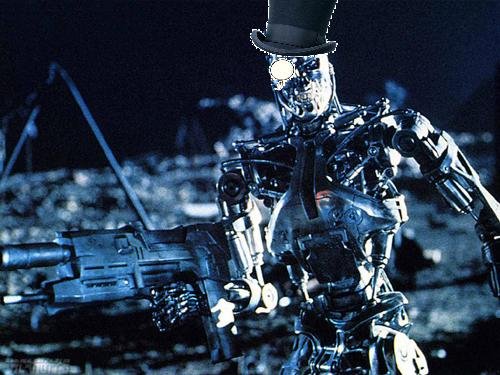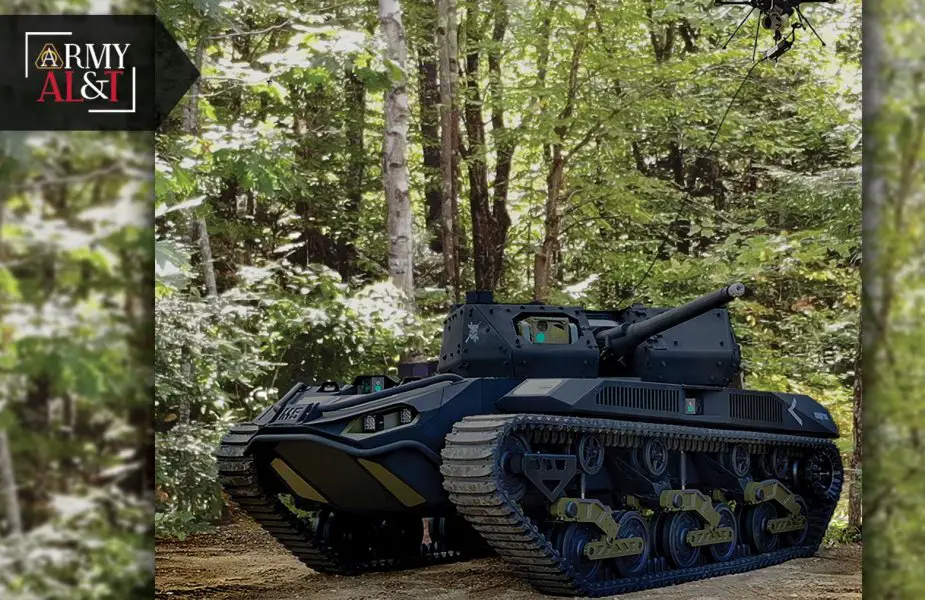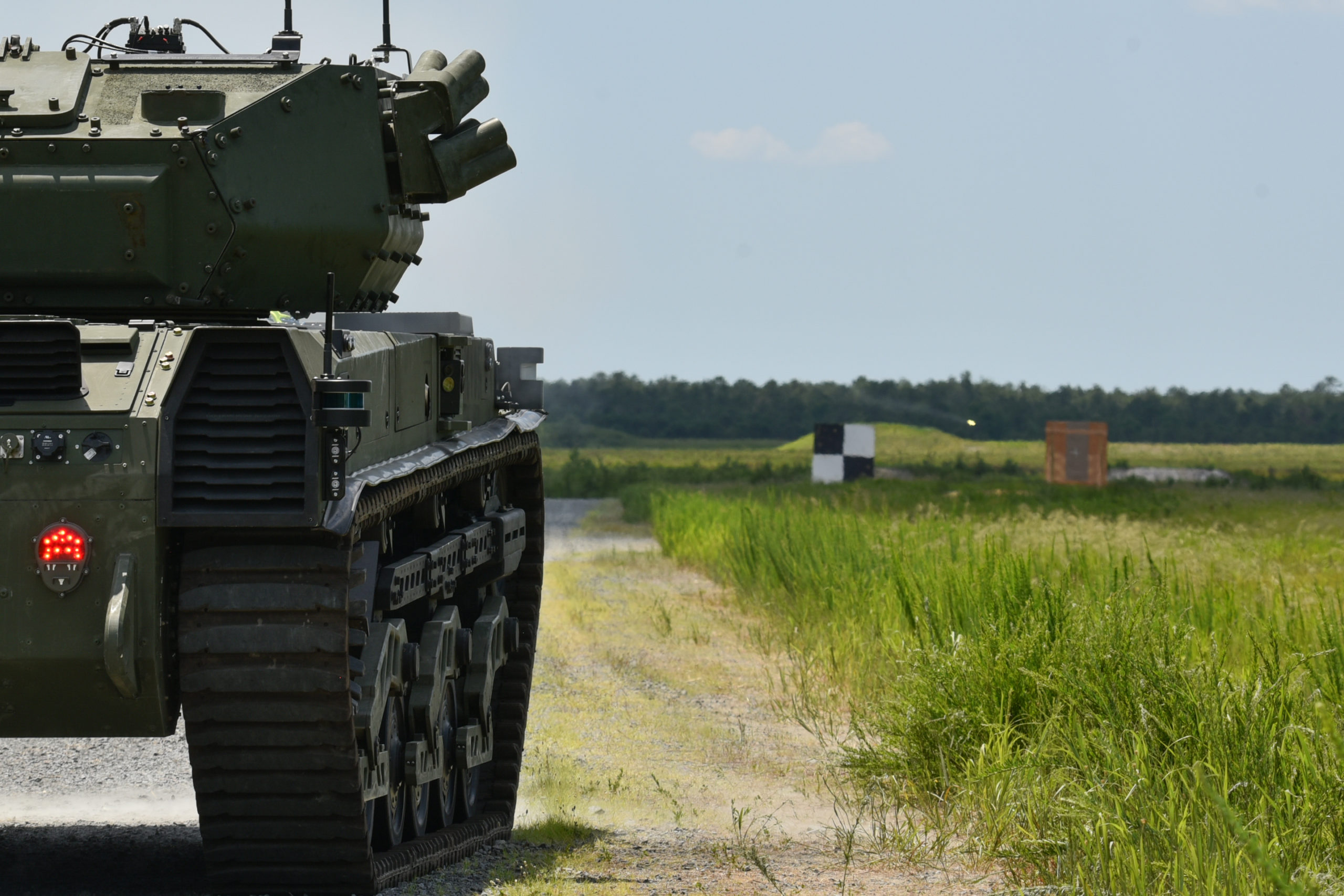In January, the Army announced its intention to award other transaction authority agreements to QinetiQ North America and Textron Systems to build four light and four medium prototype RCVs, respectively. The companies won a competitive downselect.
QinetiQ will be leading the systems integration work with a modified Expeditionary Modular Autonomous Vehicle, or EMAV, developed by its partner
Pratt Miller.
“We’re going to be providing the vehicle and the hardware and a lot of the underlying software that makes that vehicle tick, but the top-level autonomy is government-owned autonomy software that they will continue to develop and refine,” said Jon Hastie, QinetiQ North America’s director of unmanned systems products. “This is a modular system with an open systems architecture that they can continue to layer new technologies and new capabilities on top of.”
The EMAV can reach speeds over 30 mph, weighs 7,000 pounds and can carry 7,000 pounds of payload.
A platform built from the ground-up as a robotic system provides design advantages over manned platforms that have been converted to unmanned systems, he said.
“If you look at the EMAV, it’s a flat deck vehicle, which means we can strap anything to it pretty easily,” Hastie said. “We can put whatever we want on it, so it’s providing that modularity.”
The platform has extensive power offload capability because it is a diesel-electric hybrid. It can power equipment such as radios, radars, computers, or even potentially directed energy weapons, he noted. Additionally, it can operate in a run-silent mode using the battery pack for reduced noise signature, he said, while offering increased run time and better efficiency.
Textron’s Ripsaw M5 RCV-medium can reach speeds of 40-plus mph, has a combat weight of 10.5 tons and a payload capacity of 8,000 pounds.
It will also have diesel-electric drive and be equipped with sensors developed by partner FLIR Systems that will provide 360-degree situational awareness. FLIR’s SkyRaider unmanned aerial system can also be deployed from the vehicle tethered or untethered, said Sean Baity, director of engineering at Textron.
“It allows the persistence and the resilience of a tethered platform, but also the ability to allow that UAS to expand the reach and coverage available to the remote RCV operator,” he said.
A FLIR-developed small unmanned ground vehicle can also be deployed from the Ripsaw, he noted.
“There’s tremendous opportunity in terms of how do you effectively deploy robots within a maneuver force,” Baity said. “We really have provided a solution, M5, built around the idea of flexibility, modularity — because we know that the mission and the best effective way to use this platform is not only yet to be formed and really codified or established within the Army, but it also has so much potential in such a wide range of applications.”
The M5 is the fifth-generation version of the Ripsaw, which was developed by Howe & Howe Technologies. Textron acquired the company last year.
“It will really be that Swiss army knife of future combat vehicles where … the vehicle can be changed or modified” for any mission, said Howe & Howe Senior Vice President Mike Howe.
During the phase 2 experiment, the light and medium RCVs will be involved in company-level offensive and defensive operations that are more complex than reconnaissance, Wallace said.
The insights gleaned can be applied to higher level units, he noted.
“We can’t take the lessons we learned from a platoon-level exercise and then scale it to a brigade level, but we certainly can do that with a company,” he said.
The service will try to conduct a hasty breach using robotic assets, and also employ a remotely operated chemical detection package.

